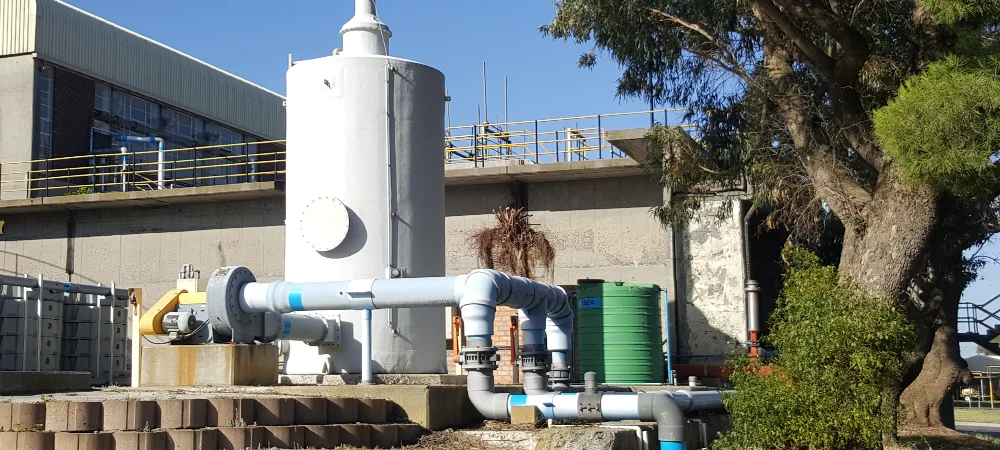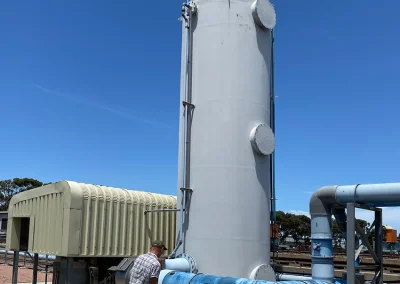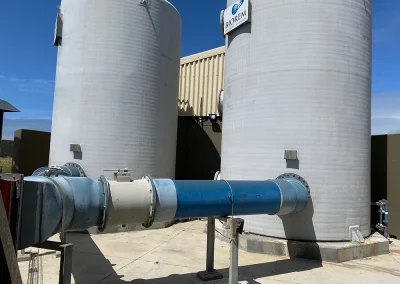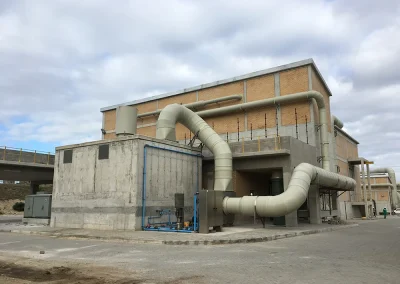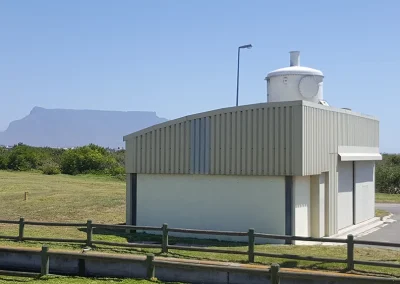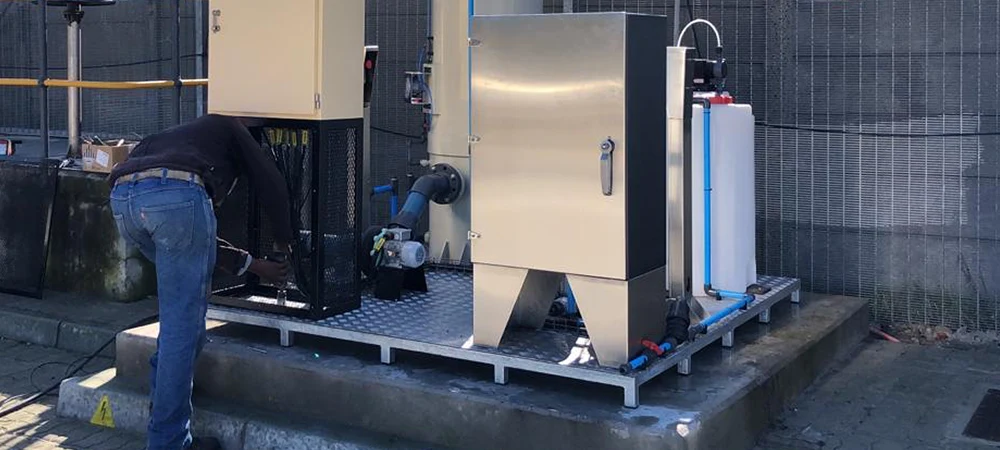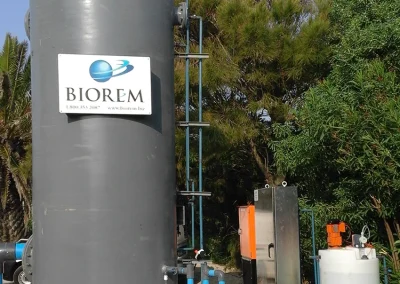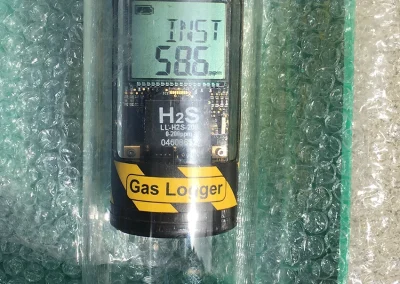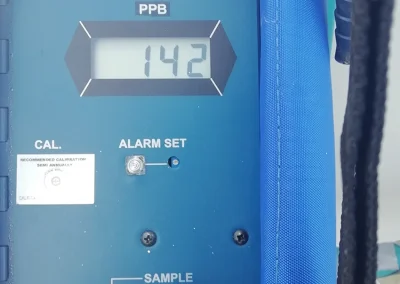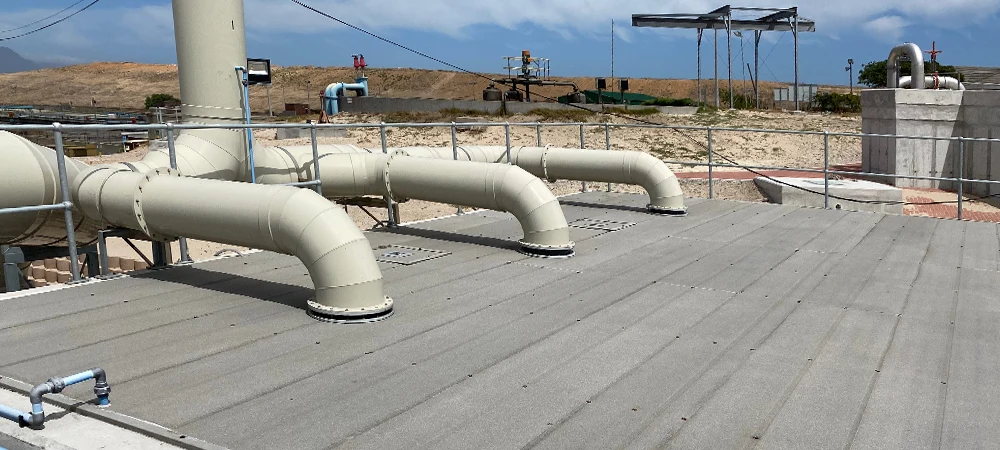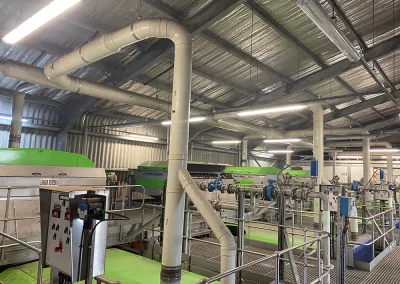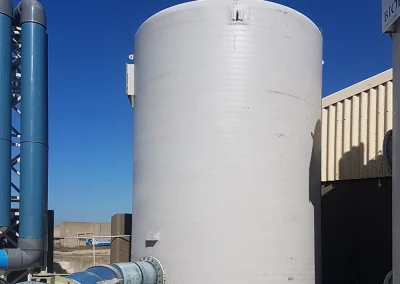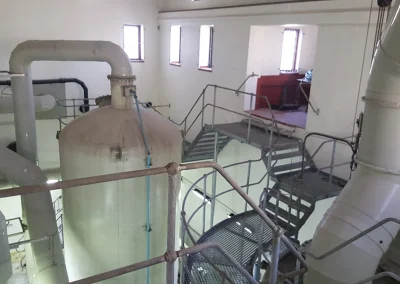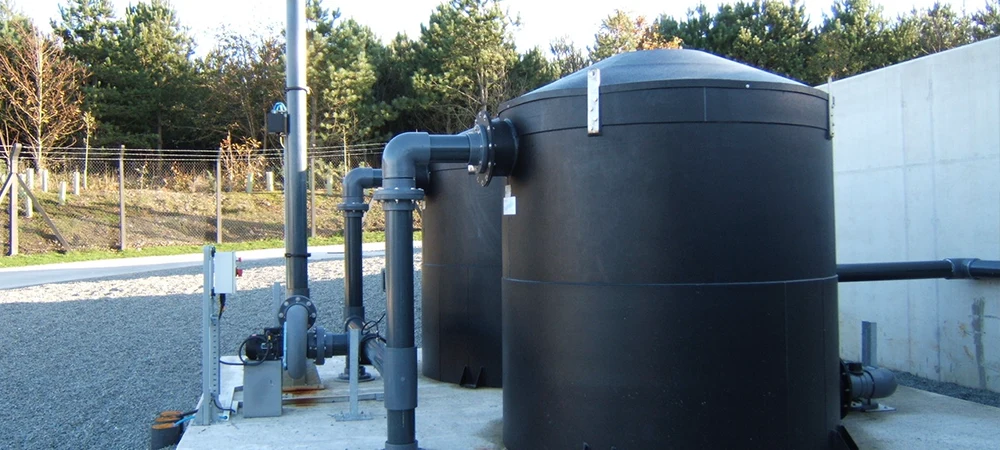
How Our Dual Stage Biofilters Work
TECHNOLOGY DESCRIPTION
vitaAER dual stage biofilters combine a bio-trickling filter with a biofilter to achieve comprehensive odour and contaminant removal. The first stage utilizes the bio-trickling process to eliminate high concentrations of H₂S, while the second stage biofilter targets residual non-soluble odours, organic sulphur compounds and VOCs.
The bio-trickling filter employs synthetic media, whereas inorganic media is used in the biofilter stage. In the bio-trickling filter, foul air is introduced at the bottom of the reactor vessel by a fan, and water is evenly distributed from the top by a recirculation pump. This maintains a moist environment conducive to gas-liquid phase transfer, supporting predominantly autotrophic microbes and flushing out by-products.
The synthetic media provides a surface for biofilm attachment and gas-film contact, where most odorants are biodegraded. Some odorants are also removed by microorganisms suspended in the liquid effluent. Controlled recycling of the liquid effluent ensures microbe re-seeding, effective scouring of salts and metabolites, accurate nutrient addition, better pH control, and reduced water usage.
The second stage biofilter effectively removes remaining odours and contaminants. The inorganic media is pH-buffered and nutrient-enhanced to create a pH-neutral environment ideal for heterotrophic microbes. Dead biomass, salts, and other contaminants are periodically flushed out by a timer-controlled irrigation system, ensuring optimal performance and maintenance of the biofilter.
CONFIGURATION TO CUSTOMER NEEDS
Flexible design allows for housing of our biofilter technology in cylindrical or rectangular vessels to match site conditions and customer preferences.
MATERIALS
Reactor vessels are fabricated from polypropylene, fibreglass-reinforced plastic or concrete for large systems (airflows>20000m³/h). Plastic vessels are corrosion resistant and designed for a 20-year lifespan. Concrete vessels are lined with HDPE anchor knob sheeting to protect against sulphuric acid attack. All other components are acid and corrosion resistant.
RECIRCULATION PUMPS
Recirculation pumps are constructed from acid-resistant materials and selected for reliable operation and low maintenance. Pumps are self- priming.
PERMANENT MEDIA
Our bio-trickling filter (synthetic) and biofilter (inorganic) medias are selected for their large surface area/volume ratios, water storage capacities, pore sizes, low pressure drops, structural integrity and chemical/biological resistance. Our medias are guaranteed to last for a minimum period of 10 years.
NUTRIENT DOSING SYSTEM
Where treated effluent is not available nutrient containing nitrogen, phosphorus, potassium and trace elements are added to sustain biological activity.
ODOUR VARIABILITY
Our dual stage biofilters are engineered to cope with variable odour concentrations ensuring constant and reliable odour removal.
SIMPLE & RELIABLE OPERATION
There are no complicated control systems or sensors. PLC operation is not required. Airflow, water recirculation and irrigation rates are set at time of commissioning. Nutrients (where required) are replenished monthly.
CONTROL PANEL
Control panels are locally designed and constructed to local codes and individual customer specifications. All components are locally available for quick and easy replacement.
LOCAL CONTENT
Designed and manufactured (locally) in collaboration with our local and international technology partners.




